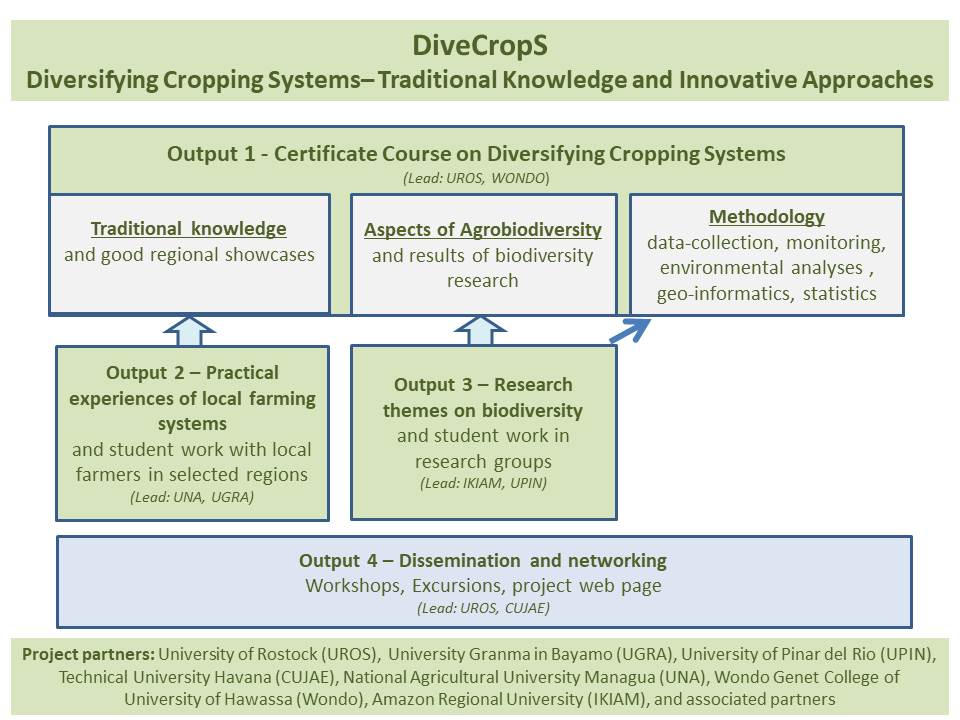Summary
A high biodiversity in agro-ecosystems provides a significant contribution to sustainable development in the sense of Agenda 2030 and to the achievement of sustainable development goals (SDGs). This applies in particular to SDG 2 to combat hunger and SDG 15 to protect terrestrial ecosystems. The creation of adapted and diverse cultivation systems also contributes to soil protection and counteracts soil degradation (in particular erosion). Essential soil functions, such as carbon storage as well as filter and buffer functions, can be preserved and contribute to climate protection (SDG 13) and clean (ground) water resources (SDG 6). Awareness of the close links between biodiversity and sustainable agriculture led to the addition of agro biodiversity to the Convention on Biological Diversity (CBD) in 1996. The increasing integration of aspects of agro biodiversity in teaching and research at universities in developing countries contributes to the achievement of the above-mentioned SDGs. The planned project will not only consider students, but will also develop continuing education programmes in the sense of lifelong learning and as a contribution to high-quality and equitable education (SDG 4). In addition, it is urgently necessary at universities to incorporate the traditional knowledge and experience of farmers and communities in the region more effectively in teaching and in research.
The courses to be developed should be available for students as well as, in the sense of lifelong learning, for other groups (e.g. farmers, teachers and consultants). The close cooperation with local farmers and rural communities is essential to achieve the project goals. At the same time, this approach contributes to the appreciation of farmers' achievements in preserving agro biodiversity and raises knowledge about the importance of diverse farming systems for food production and the environment.

